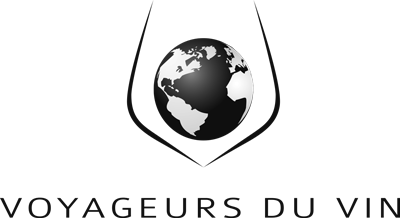History of Bibi Graetz
Bibi Graetz’s journey into the wine world is as unique as the wines he creates. Born to a Norwegian mother and an Israeli sculptor father, Graetz initially pursued a career in art. His family’s acquisition of the Castello di Vincigliata, a medieval castle near Florence, became the starting point of his winemaking adventure.
In the early 2000s, Graetz began experimenting with the surrounding vineyards, which were planted with old vines of Sangiovese, Colorino, and Canaiolo—some over 50 to 80 years old. Despite lacking formal training in oenology, Graetz’s intuitive and experimental approach led to the creation of his first vintage of Testamatta in 2000, which received critical acclaim. This debut marked the beginning of a new chapter in Tuscany’s winemaking history.
Today, Graetz continues to push boundaries, blending tradition with innovation to create wines that embody his artistic spirit and dedication to Tuscan terroir.
Region and Vineyards
Graetz’s vineyards are spread across Tuscany’s most revered locations, including Vincigliata, Lamole, Montefili, Siena, Londa, and Olmo, many situated at altitudes exceeding 300 meters. These sites are characterized by old vines and stony soils that enhance the minerality and transparency of his wines. High altitudes bring cool nighttime temperatures, preserving the grapes’ acidity and aromatic complexity.
A cornerstone of Graetz’s philosophy is the preservation of Tuscany’s old vines, which he believes are crucial to producing wines of extraordinary depth and character. These vines, while yielding low quantities, produce highly concentrated fruit that defines the unique style of his wines.
Innovation and Philosophy
Graetz’s approach to winemaking is as unconventional as it is visionary. Drawing from his artistic background, he considers winemaking an art form, crafting each vintage with the same attention to detail as a painting. His wine labels, hand-painted by Graetz himself, reinforce this connection between art and wine.
Unlike many Supertuscan producers who rely on international varietals, Graetz remains dedicated to indigenous Tuscan grapes like Sangiovese, Colorino, and Canaiolo. His low-intervention philosophy includes using natural yeasts, fermenting in small batches, and minimizing manipulation to allow each vineyard’s character to shine.
In recent years, Graetz has established a state-of-the-art winery in Fiesole, near Florence. This facility enables him to refine his craft, focusing on precision and quality while staying true to his artisanal methods.
Wine Range of Bibi Graetz
- Testamatta: A 100% Sangiovese Supertuscan celebrated for its purity, balance, and vibrancy.
- Colore: The flagship wine, crafted from old-vine Sangiovese, offering exceptional depth and complexity.
- Casamatta: A more accessible range, showcasing Graetz’s artistry and passion for Tuscan varietals.
Each wine reflects his dedication to showcasing Tuscany’s unique terroirs and varietals.
Did You Know?
The name Testamatta, meaning "crazy-head" in Italian, embodies Bibi Graetz’s fearless and creative approach to winemaking. His wines have achieved cult status worldwide, bridging the gap between Tuscany’s ancient traditions and modern innovation.
